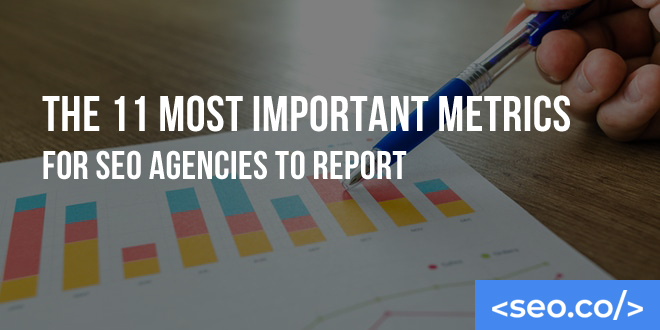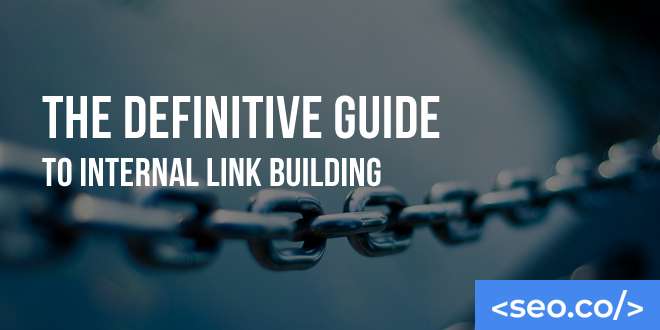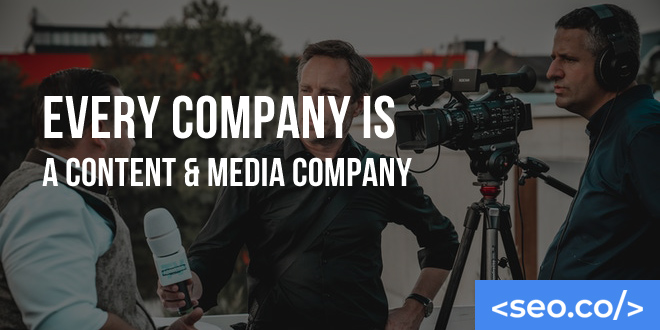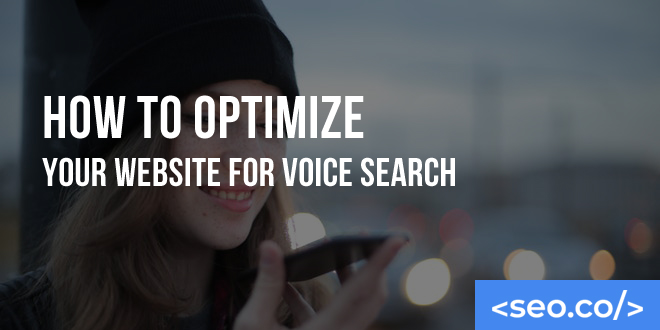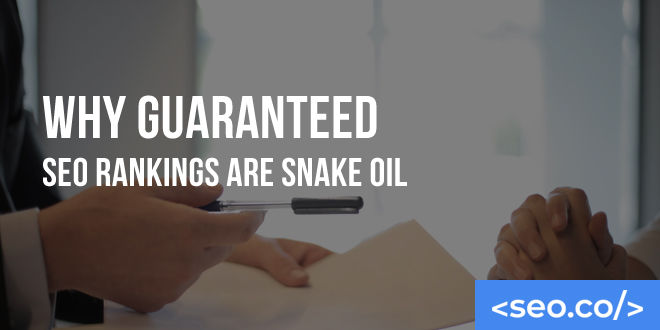
Why Guaranteed SEO Rankings are Snake Oil
Getting a top Google ranking for critical keywords isn’t easy. But some SEO companies advertise ‘guaranteed SEO rankings.’ For example, they may promise you will rank #1 for certain keywords or you get a full refund for the month. On first glance, guaranteed SEO rankings might sound like a no-lose proposition. But if you see an SEO guarantee, your best bet is to look for SEO services elsewhere. Guaranteed SEO Services Overview A company that guarantees a #1 Google rank will usually promise to give your money back or offer free services for a specific period. They also may provide a guarantee of how long it will take to rank for a keyword. When this article refers to guaranteed SEO results, what we mean is guaranteeing an outcome, such as a #1 or top 5 ranking. What is a Money-Back Guarantee? A money-back guarantee is a company policy that gives clients the option of canceling their service and getting all of their money back. Companies do this to ensure customer satisfaction so they can keep their reputation intact. Why Do SEO Services Offer Money-Back Guarantees? Some SEO agencies offer a money-back guaranteed SEO services because it’s profitable for them, not you; if someone cancels with no penalty after 30 days, then those are 30 days where your campaign will be running without any sort of results or improvement in search engine rankings. For many businesses, there is an understanding that customers should have some type of protection against shady practices from companies that prey on unsuspecting consumers. This proposition sounds reasonable enough: If you’re unhappy with our services and request cancellation, you can get all of your money back. Can Most Agencies Afford Money-Back Guaranteed SEO Services? The short answer is no. A money-back guarantee on SEO services, in this case, means that the company will provide you with any type of service and honor your opportunity to cancel at any time for a full refund – even if they haven’t delivered what was promised or done anything yet! A quality SEO agency can afford to offer such an expensive policy because they know it’s unlikely someone will ever ask for their money back (plus all those months of work). If there were too many people asking for refunds after 30 days, then the cost would be prohibitively high. But, there is a caveat here. Some customers are bound to be dissatisfied with any service, regardless of the quality. Therefore, these costs can add up quickly over the year. For this reason, you should take a second look at any time an agency offers this type of guaranteed SEO . What Happens to the Money to Pay Employees? A money-back guarantee is an expensive policy for a company to take on. If they offer it, then there must be some other reason why – and that’s usually profit margins. When you hire a full-service SEO agency, you are doing so because of the work they will do in order to make your site rank higher. This means hiring people who can research keywords, build links and submit content across the web, as well as write blog posts and optimize social media platforms for success. It also costs money to keep these employees around; if their campaigns aren’t bringing in any revenue or improved rankings after 30 days (or even 60), then those funds have been wasted by paying them during this time period without achieving results. As you can see, there is no feasible way for any SEO agency to offer this service, especially if they have a large team. Should You Trust a Money-Back Guarantee? The answer is no. If you’re looking for guaranteed SEO services, do not trust any company that offers a money-back guarantee! You will likely only come across this type of offer from companies who want to maximize their profit margins and are willing to take on the risk associated with it. These agencies should be avoided at all costs or else they may just steal your money. If someone tells you about an agency that can offer a guaranteed refund within 30 days, then proceed with caution. There’s no such thing as perfection when it comes to search engine optimization, even if SEOs won’t always admit it. As a result, those people who ask for refunds after 30 days have probably seen some improvement in rankings but are still dissatisfied. What Should You Do Instead? SEO agencies provide an outstanding, long-term service. Money-back guarantees are usually only applicable to short-term services, such as when you visit a fast-food restaurant. Long-term guaranteed SEO services involve paying people over time and covering profit margins. This makes it nearly impossible to offer numerous money-back guarantees. As such, you should focus on hiring an SEO agency you trust. Here are some tips you can follow to make sure you’ll always choose the right SEO agency: Research the agency’s website to see how long they’ve been in business and what type of reviews they have from customers. Look at their pricing structure: is it reasonable or expensive? Ask for referrals from people who have hired them before and find out why those clients were happy with the service. Browse the online reviews and testimonials of any SEO agency you come into contact with. With that said, make sure you ask about an initial consultation when selecting an SEO agency. How Much Do SEO Services Cost? This is a very important question to ask. SEO agencies provide outstanding, long-term service with high-profit margins but no money-back guarantee. That’s why they can afford to offer the best digital marketing services available without charging outrageous prices for SEO. As such, you should be looking for affordable pricing that doesn’t break your budget and also delivers results in 30 days or less, not just results after 30 days! If there were too many people asking for refunds after 30 days (and debunking this myth), then companies would have to charge customers more

